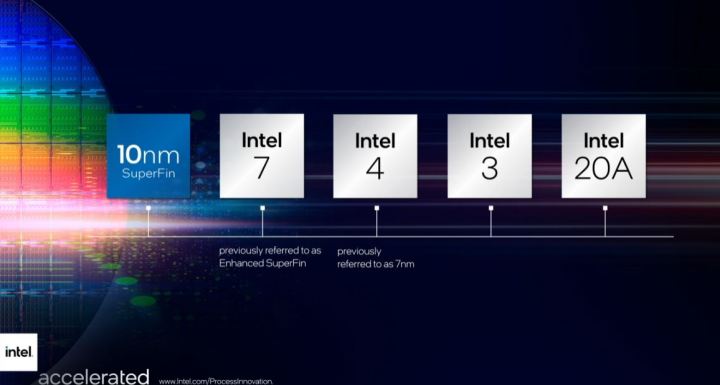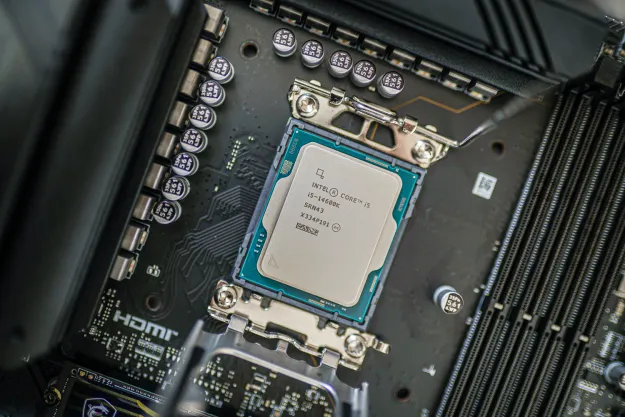Intel is staging a comeback. But rather than fend off competition from some of its bitter rivals, Intel is instead embracing Qualcomm to help it regain the silicon crown. As part of its efforts to regain leadership, Intel will be opening the doors of its fabs to manufacture processors for other companies, and the company announced that it had secured deals to make chips for Qualcomm and Amazon at its factories.
This means that Intel’s foundries will be making chips for its rivals based on design from ARM, rather than the x86 architecture that’s at the heart of its processors, like the 11th Gen Core CPUs. The plan, according to Intel, will help it regain its leadership in chip manufacturing by 2025 with five core technologies — including RibbonFET, PowerVia, and Foveros enhancements — that affect the way transistors are designed and interact with each other.

RibbonFET, for example, is a new design for transistor circuitry that will allow Intel to build smaller, more powerful chips, while PowerVia helps to manage power consumption by the transistors, according to CNET. The company is leveraging its Foveros acquisition to make its chips even denser. Intel CEO Pat Gelsinger announced that extreme ultraviolet lithography could debut by 2025.
In another change, Intel will be aligning with the rest of the industry on how it names its nodes. Rather than naming the process based on size — Intel had previously named its nodes based on the size of its transistors, which are measured in nanometers — the company is changing to what it describes as standard labeling to compete with other foundries. The Enhanced SuperFin process will be called Intel 7, for example, while Intel’s 7nm node will be referred to as Intel 4. RibbonFET and PowerVia will be integrated into Intel 20A and that will launch in 2024.
The company acknowledged some of the skepticism among analysts and industry insiders after years of missteps and delays.
“We’re laying out a whole lot of details to The Street to hold us accountable,” Intel CEO Pat Gelsinger told Reuters in an interview as he laid out his company’s road map during a presentation.

The partnership with Qualcomm is somewhat surprising, given that the latter is starting to encroach on Intel’s leadership in the PC market with its own ARM-based Snapdragon processors on always-connected PCs through a partnership with Microsoft. Qualcomm’s Snapdragon CPUs compete against Intel’s laptop processors and have been adopted by Lenovo, HP, Samsung, and others. More recently, Qualcomm acquired Nuvia for its ARM-based processor designs, and the company hinted that new always-connected PC processors are expected to arrive as early as next year.
It’s unclear how much of Qualcomm’s business Intel will receive as part of the deal or how much the deal is worth. Qualcomm currently also relies on Samsung to manufacture some of its Snapdragon processors, for example. At one point, Intel was even publicly courting Apple to bring the manufacturing of its A-series and M-series processors to its foundries.
Earlier this year, Gelsinger confirmed that Intel was in talks with Amazon, Cisco, IBM, and Microsoft to be the foundry for those company’s chips. It’s unclear if Intel will get the Microsoft business, given that Qualcomm had designed the custom processor in the Surface Pro X.
With Amazon, Intel won’t be manufacturing the processors that power Amazon Web Services, according to Yahoo Finance. Instead, Amazon is relying on Intel’s packaging technology to build chipsets.
In addition to increasing threats from rivals AMD and Nvidia — the latter is in the process to acquire ARM from Japanese conglomerate Softbank — Intel is also facing stiff competition from Apple and Samsung. Apple is already mid-process on transitioning away from Intel x86 processors on the Mac, and to date, the company had launched a new MacBook Air, MacBook Pro, Mac mini, and iMac with its own M1 processor. These are based on the same ARM designs as those found on the iPhone and iPad.
Samsung, meanwhile, is working with AMD to launch an ARM-based Exynos processor with RDNA graphics, and such a chipset could be headed to smartphones, tablets, Chromebooks, and even laptops in the future.
Editors' Recommendations
- Intel may already be conceding its fight against Nvidia
- Qualcomm claims its new chips are 21% faster than Apple’s M3
- Snapdragon X Elite is a showstopper chip arriving at the worst possible time
- Qualcomm says its new chips are 4.5 times faster at AI than rivals
- This Intel gaming handheld could give the Steam Deck a run for its money


